Top 10 Poshmark alternatives for resellers in 2025

If you’ve only been listing on Poshmark, you’re missing out.
There are plenty of sites like Poshmark in 2025 that serve different sellers, styles, and sales strategies. Some even bring niche audiences, better fees, or other tools to the table.
Some standout sites: eBay is basically “old reliable” for general resale. Depop thrives on vintage and streetwear. Mercari is perfect for quick flips and low-friction selling.
And if managing all that sounds like a full-time job, that’s where Nifty comes in. It handles listing, crosslisting, auto-delisting, and profit tracking across platforms without any stress.
The 10 best sites like Poshmark: TL;DR
There’s no shortage of sites like Poshmark in 2025, but that doesn’t mean they’re interchangeable. Some are perfect for vintage streetwear, others for big-batch sellers or local pickup pros.
Here’s a quick peek at the top resale platforms and who should use them:
Nifty supports cross-selling across Poshmark, eBay, Depop, Mercari, and Etsy, which makes it the best automation and reselling tool for resellers using those five. Crosslist, delist, and track profits all in one place.
1. eBay: Best for high-volume and diverse inventory
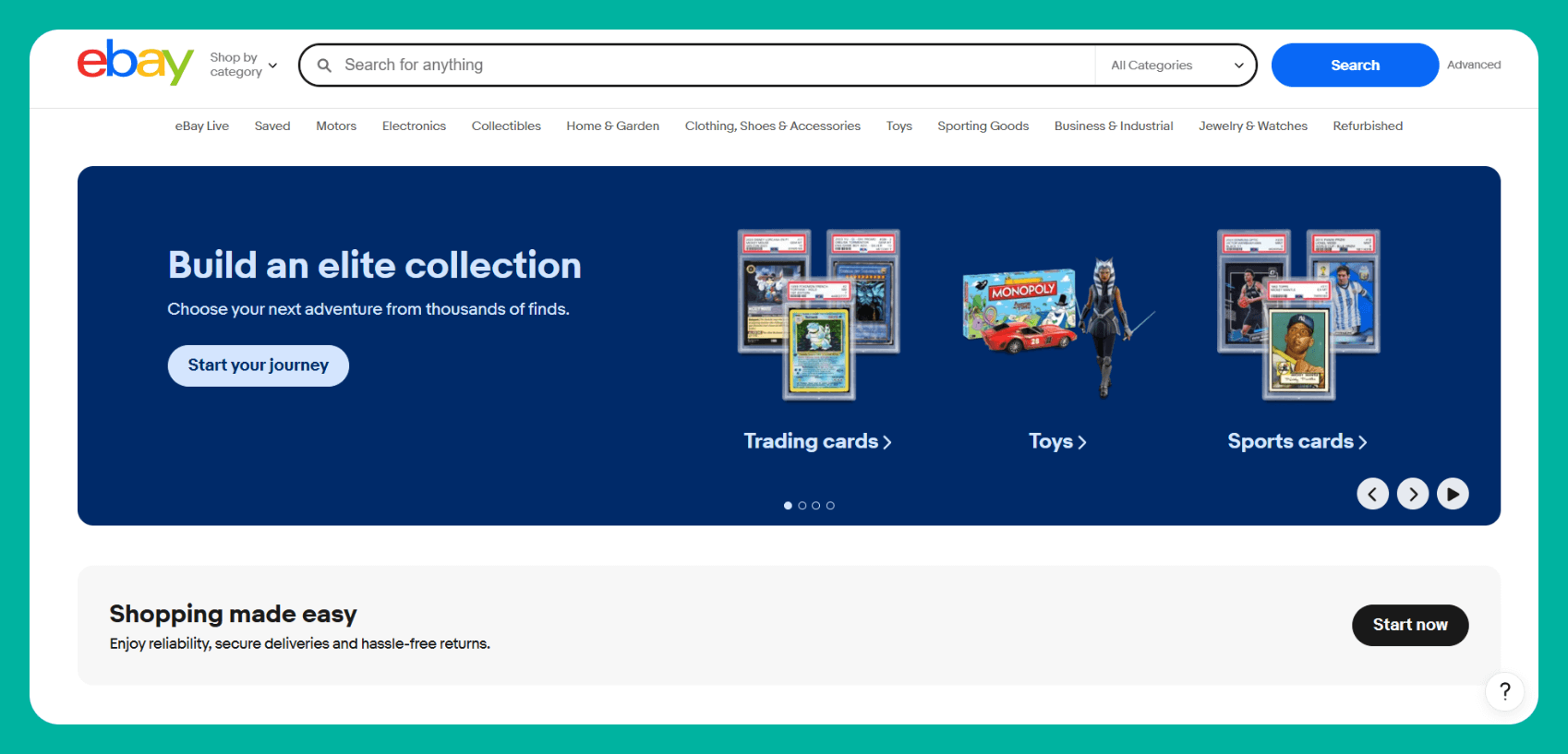
eBay is the OG resale giant. In 2025, it is still one of the most flexible platforms available. Whether you’re flipping collectibles, selling vintage tees, or moving serious inventory, eBay offers the kind of reach and control that mobile-first resale apps can’t match.
Who it’s for: High-volume sellers, collectors, and anyone with a mixed inventory beyond clothing.
What makes it different: You can auction your stuff, set fixed prices, go international, or move out-of-the-box items no one would touch on Depop or Mercari, like trading cards or auto parts.
Features
- Fixed-price and auction listings
- Truly massive international buyer base
- Promo tools and seller analytics
- Shipping integrations and protection options
Pros
- Huge buyer base
- Global reach
- Total control over listings and format
Cons
- Interface is … not cute
- Competition can wreck your margins
- Takes effort to stand out
Fees: 10–15% on final sale value, depending on category. First 250 listings/month are free, then $0.35 each, or you could go premium.
2. Depop: Best for Gen Z vintage and streetwear
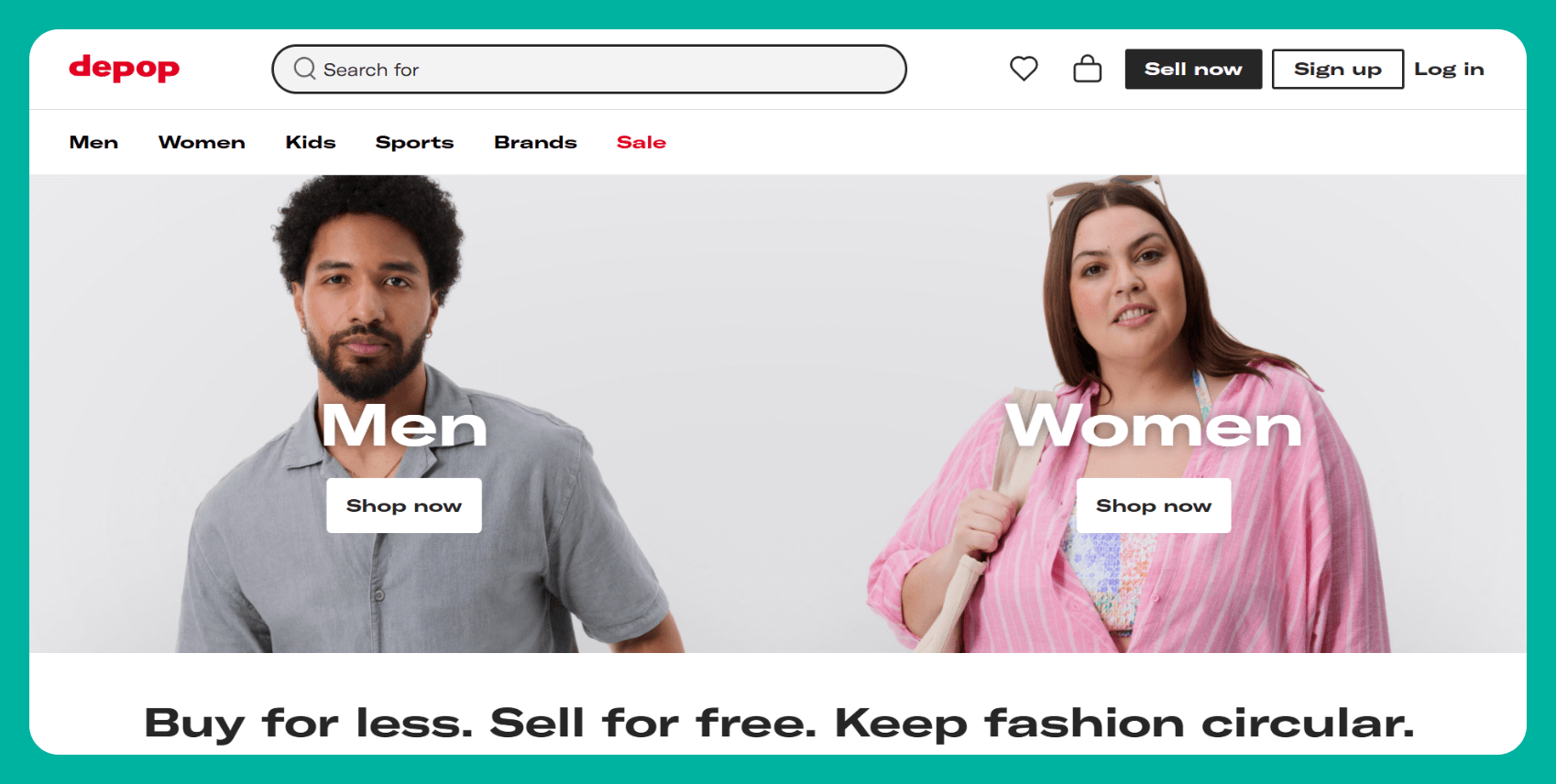

If eBay and Instagram had a baby, it would be Depop. The app is dripping with vintage vibes, Y2K fits, and curated style that Gen Z eats up. It's one of the top apps like Poshmark, but with a cooler aesthetic.
Who it’s for: Creators, curators, and anyone with a closet full of vintage or experimental fashion.
What makes it different: Made like a social feed with likes, follows, and messaging. Listings feel like posts, and trends shift fast.
Features
- Social shopping experience
- App-focused interface
- Direct buyer messaging
- Listing takes all of 30 seconds
Pros
- Super-active Gen Z user base
- Lower fees than Poshmark
- Easy to build a following
Cons
- Smaller marketplace overall
- Not ideal for non-fashion items (e.g., most electronics cannot be listed)
- Buyer protection isn’t bulletproof
Fees: No seller fees for U.S. and U.K. sellers, but other countries pay 10% commission plus processing fees. Payment processing fees for U.S. sellers = 3.3% + $0.45 and U.K. sellers = 2.9% + £0.30. Still cheaper than most Poshmark alternatives.
3. Mercari: Best for quick, no-frills casual reselling


Mercari feels like the no-frills sibling of resale platforms. It doesn’t care about aesthetics, just about moving product. If you want something fast, simple, and reliable, this is one of the easiest resale sites out there.
Who it’s for: Casual resellers, garage clean-out types, and anyone chasing quick flips.
What makes it different: No social layer, no follower grind, just search, post, and sell.
Features
- Supports fashion, tech, toys, and more
- Simple shipping setup
- Easy-peasy mobile listing
Pros
- Medium fees
- No social pressure
- Great for fast-moving inventory
Cons
- Less visibility for niche fashion
- Fewer customization tools
- Community vibe is … nonexistent
Fees: 10% selling fee, plus buyers pay a 3.6% protection fee.
4. Facebook Marketplace: Best for local sales

Facebook Marketplace is the neighborhood garage sale, pretty much. It’s one of the best websites like Poshmark for hyper-local sales, especially if you hate shipping and love cash in hand.
Who it’s for: Anyone who wants to sell locally, move stuff fast, or skip fees nearly altogether.
What makes it different: No listing fees, no platform confusion, just post and sell to people near you.
Features
- No listing or selling fees
- Local pickup and delivery
- Messenger integration
- Instant access to massive audiences
Pros
- Totally free
- Built-in traffic via Facebook
- Instant buyer communication
Cons
- High flake rate
- Risk of scams
- No shipping protections unless integrated with Shops
Fees: Free to list and sell unless you use Facebook Shops. 10% selling fee (minimum $0.80) for items listed with shipping. Items listed with local pickup (no shipping) do not have this 10% selling fee. Shipping via Facebook checkout is 5% per shipment, or $0.40 for items $8 and under. Facebook Shops also has payment processing fees.
5. Vinted: Best for keeping 100% of your sale price
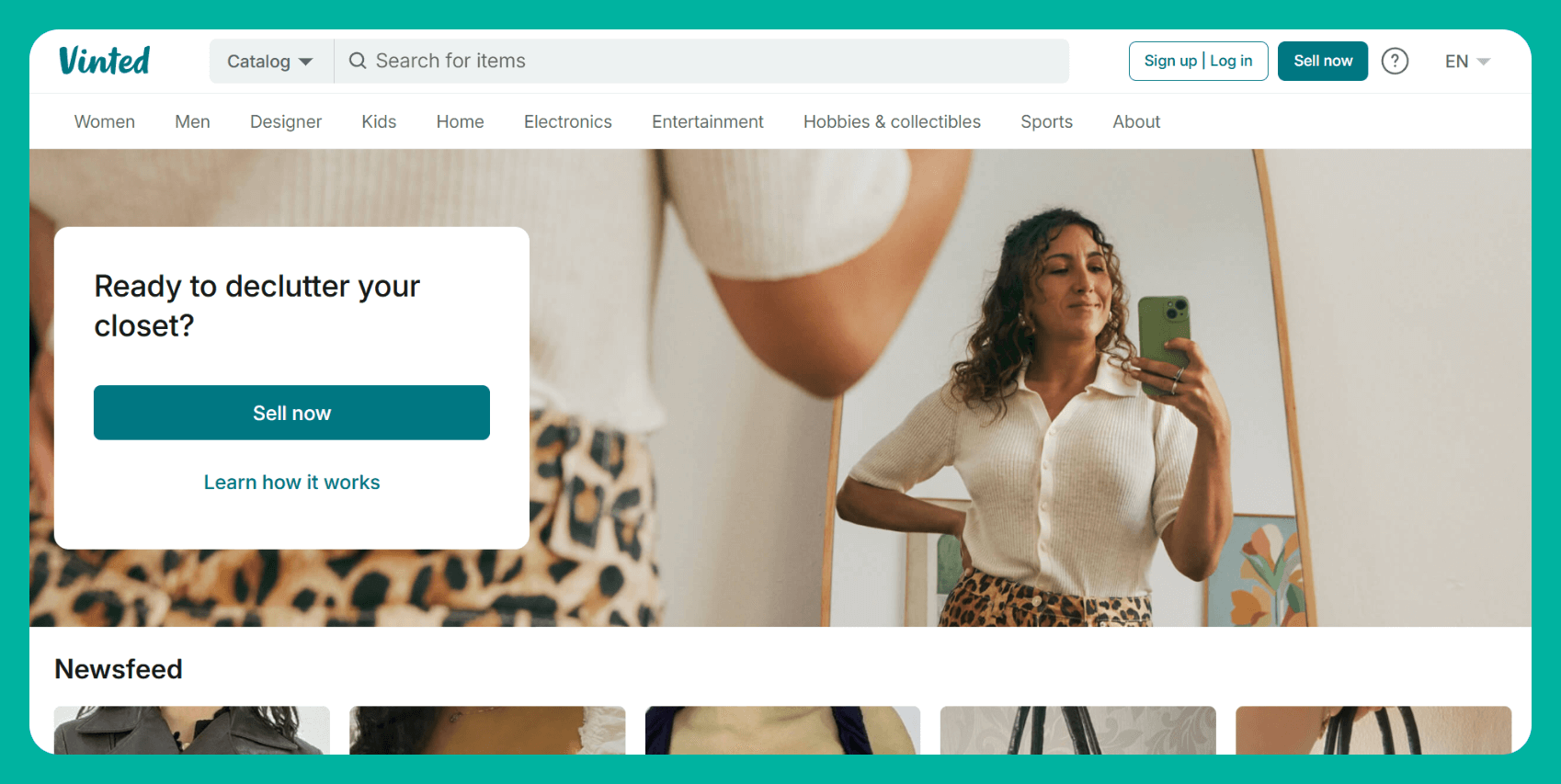
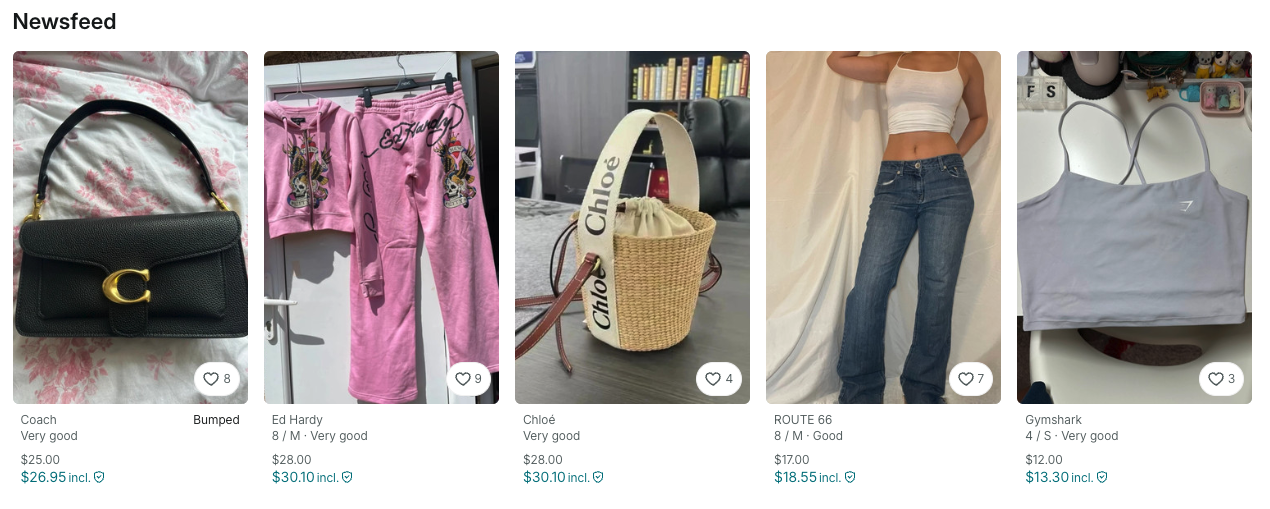
Vinted is one of the only Poshmark competitors that doesn’t take a cut. Sellers pay zero in platform fees, and buyers cover shipping. It’s big in Europe but gaining steam in the U.S.
Who it’s for: Volume sellers, eco-conscious shoppers, and anyone who wants to cut fees to the bone.
What makes it different: Zero seller fees. Seriously. You keep every dollar of your sale price.
Features
- Buyer-paid shipping and protection
- Clean, simple listings
- Sustainability-focused community
- Very strong mobile app
Pros
- You keep 100% of the sale
- No fee surprises
- Very seller-friendly experience
Cons
- Smaller U.S. buyer base
- You cannot force returns (both seller and buyer must agree on the return)
- Limited to fashion and lifestyle categories
Fees: None for sellers, but some buyers may be subject to sales tax. Buyers pay protection and shipping costs.
6. Grailed: Best for exclusive menswear and streetwear
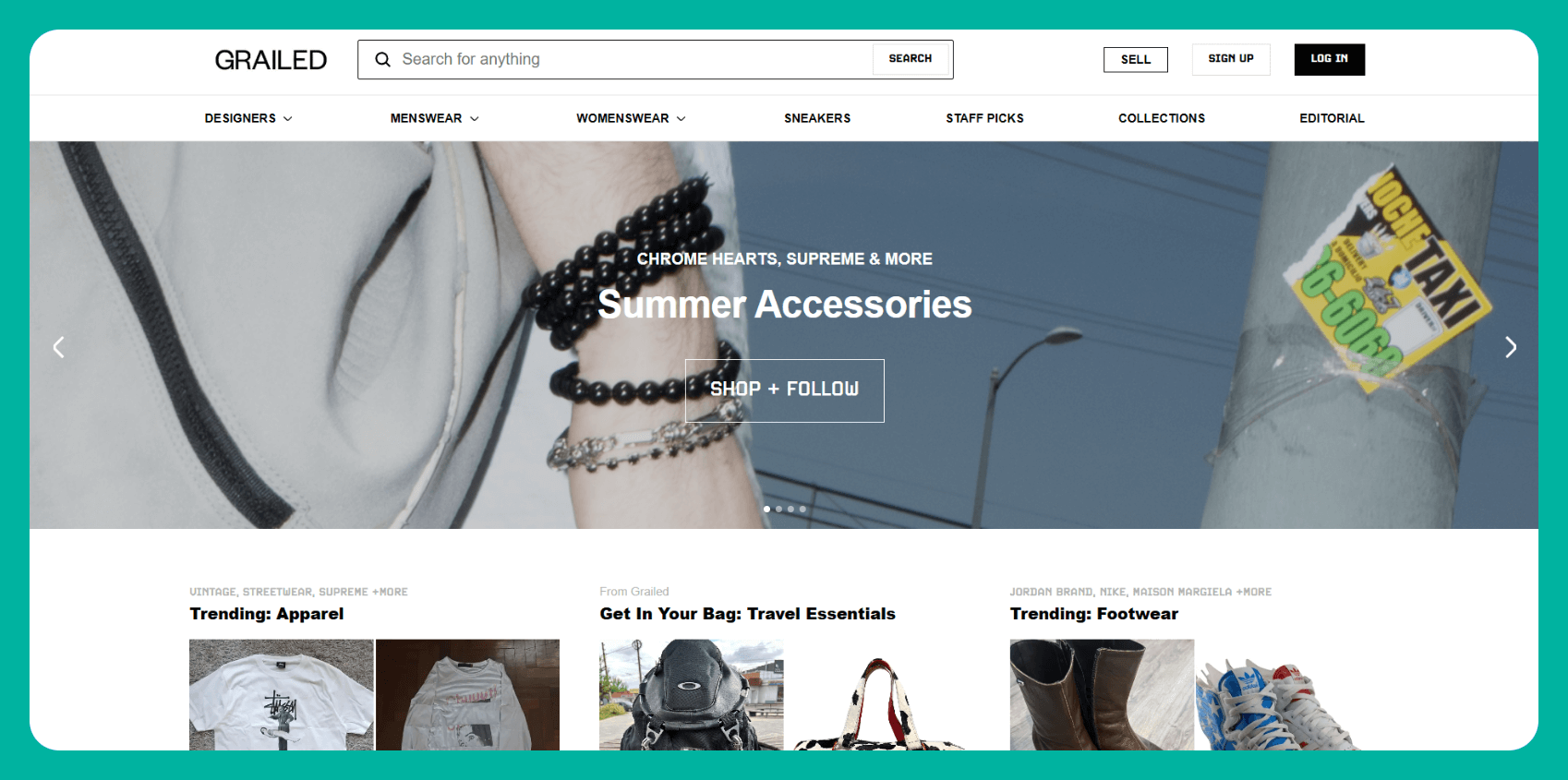
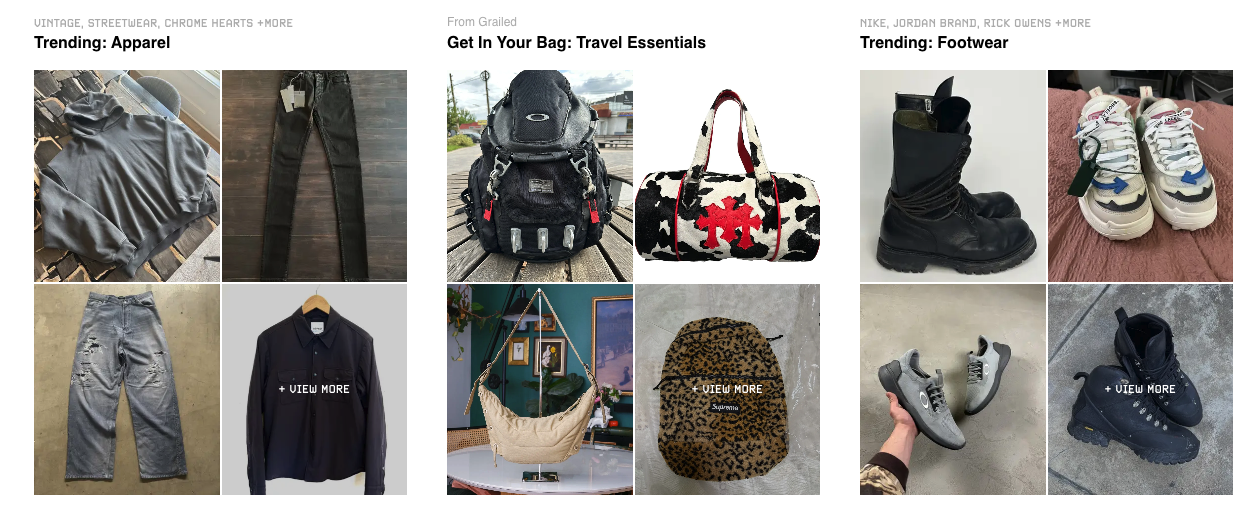
Grailed is not here for normcore. This is a good choice for designer menswear, limited drops, and resale sites like Poshmark that care about authenticity and exclusivity. If your wardrobe includes Rick Owens and Raf Simons, you already know.
Who it’s for: Sellers with rare menswear, sneakers, or hypebeast energy.
What makes it different: Curation. Every listing is reviewed, and the entire platform skews toward high-end fashion and streetwear.
Features
- Authentication on top-tier items
- Style-centric search
- Global shipping
- Curated brand lists
Pros
- Serious buyers who know what they want
- Low commission
- Community built around fashion
Cons
- Niche market
- Not great for basics
- Smaller pool of buyers
7. Vestiaire Collective: Best for authentic luxury women's fashion
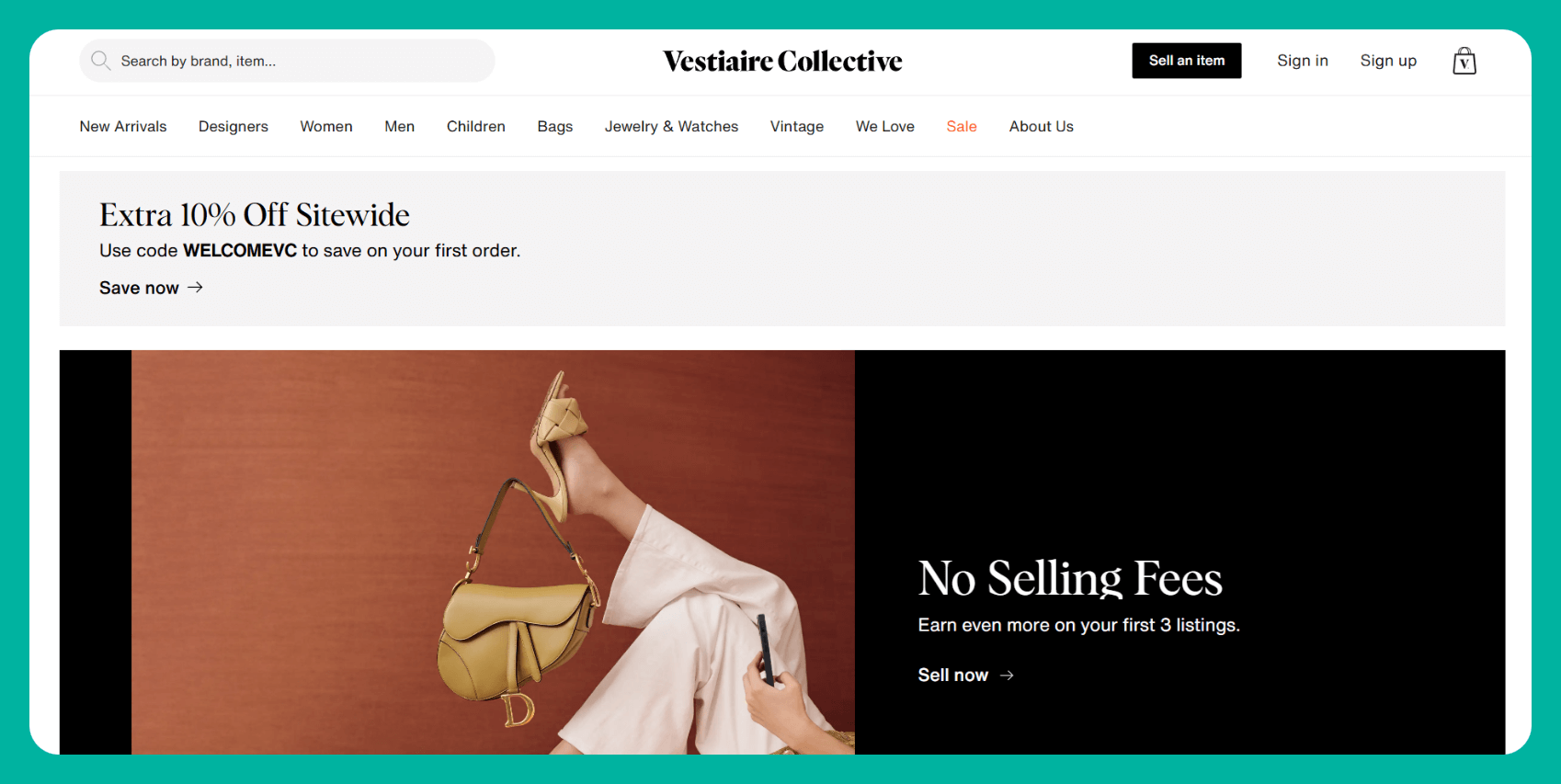

Vestiaire Collective is one of the more polished Poshmark alternatives, made for reselling high-end women’s and men’s fashion. Think handbags, heels, and the kind of labels that come with authentication tags.
Who it’s for: Sellers of luxury, designer, or gently used women’s and men’s apparel and accessories.
What makes it different: The platform offers built-in authentication and buyer protection. It feels more like consignment without the storefront.
Features
- Authentication and fraud protection
- Payouts via direct deposit or PayPal
- Premium designer-focused categories
- Clean, boutique-style UI
Pros
- Trusted by designer buyers
- Excellent fraud filters
- Simple listing experience
Cons
- Higher fees than other platforms
- Smaller, niche audience
- Slow payouts
Fees: Free listing. 10% selling fee + 3% payment processing fee. (Some exceptions for UK sellers on particular items.)
8. Whatnot: Sell in live auctions, connect with others

Whatnot is QVC for Gen Z. You go live, you auction, you sell, fast. It’s made for hype, not chill. If you’ve got sneakers, cards, vintage tees, or the guts to go live on camera, this one’s your jam.
Who it’s for: Sellers with collectible-heavy inventory or the charisma to move items in a live show setting.
What makes it different: You go live, show your items, and buyers bid in real time. It’s one of the few platforms where the seller’s energy can directly drive up prices and conversions.
Features
- Livestream-based selling with real-time auctions
- Tools for managing giveaways, bids, and chat
- Automated payments and shipping
- Verified seller onboarding and training
Pros
- Strong niche communities (sneakers, vintage, trading cards)
- Built-in urgency and buyer interaction
- No need for polished listings, it’s all live
Cons
- You need to stream to sell
- Performance pressure: bad lighting or slow pace = no sales
- Smaller buyer base outside collectibles and hype items
Fees: In the U.S., 8% commission on most items + 2.9% + $0.30 payment processing (note that fees apply to the total, including shipping and taxes).
9. Curtsy: Best for casual women’s fashion resellers

Curtsy is a mobile-first resale app focused on secondhand women’s clothing and accessories. Think trendy Gen Z styles, clean listings, and easy payouts. It’s great for resellers who want a chill experience without the clutter of other apps.
Who it’s for: Sellers focused on women’s fashion, especially modern brands like Zara, Lululemon, Aritzia, etc.
What makes it different: Clean, curated marketplace that handles shipping for you. You list, it sells, you drop it off. Done.
Features
- Prepaid shipping labels and free tracking
- iOS app (Android via web)
- Daily seller tips and guides
- Real-time chat with buyers
Pros
- Super easy for beginners
- Low fees and simple pricing
- Fast shipping setup
Cons
- Only supports women’s fashion
- No built-in photo editor
- Smaller user base than Depop or Poshmark
- Less brand reach for luxury or niche items
Fees: $1 + 5% selling fee, plus 2.9% payment processing, while buyers pay $1 + 5%.
10. Etsy: Best for vintage and handmade items
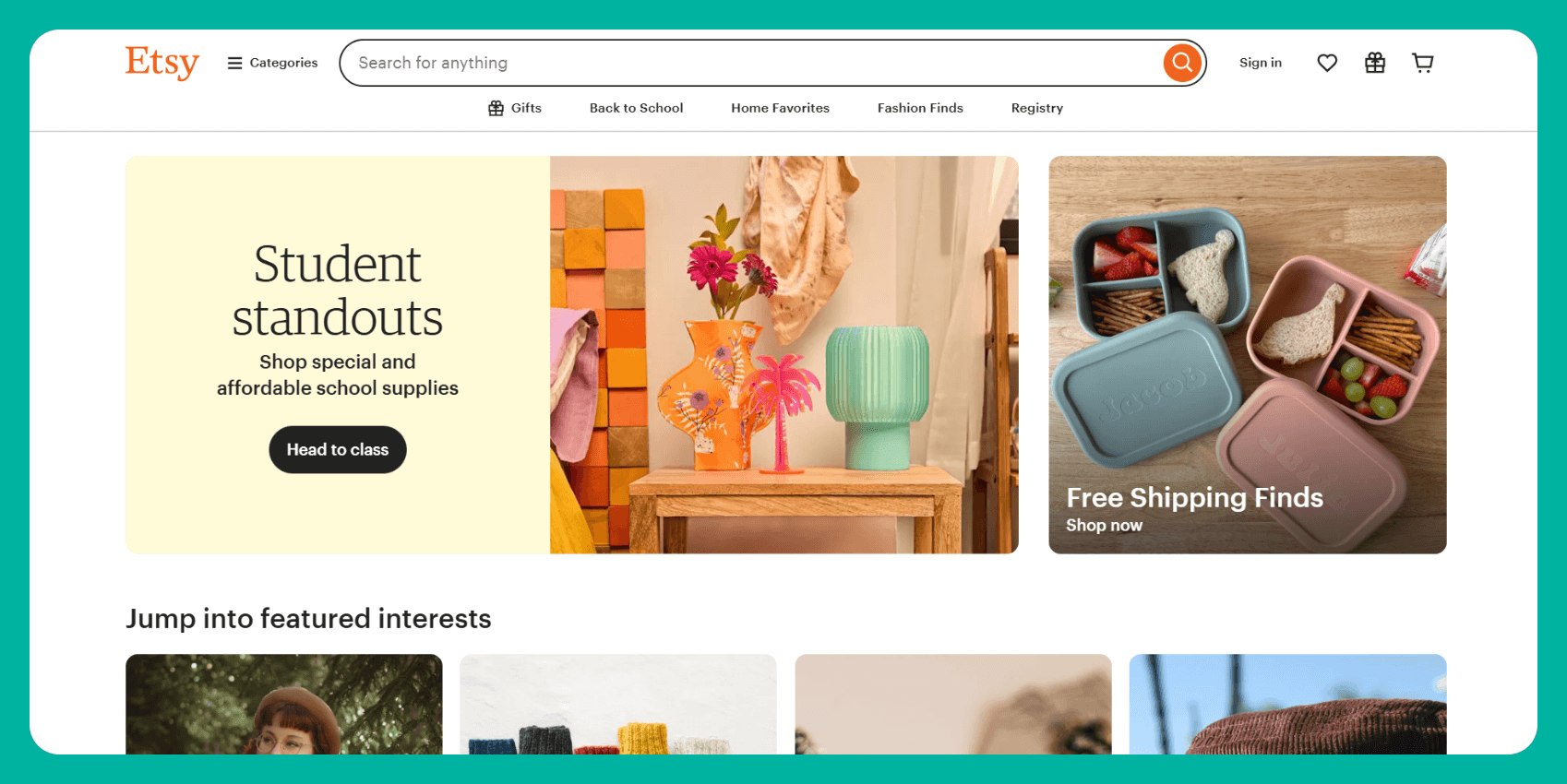
Etsy is best known for handmade goods, but it’s also one of the top alternatives to Poshmark for vintage and upcycled fashion. If you’ve got style, skills, and a '90s windbreaker collection, Etsy wants you.
Who it’s for: Vintage sellers, small apparel brands, and DIY creatives who want to turn their style into a storefront.
What makes it different: Focused entirely on handmade, custom, or vintage pieces. That gives your items premium positioning in a niche community.
Features
- Built-in marketplace traffic
- Customized storefront options
- Supports digital and physical items
- Analytics and ad integrations
Pros
- Loyal buyer base
- Niche, curated vibe
- Great for long-term branding
Cons
- Fees can stack quickly
- Less visibility for mass-market clothes
- Some shoppers expect craft pricing over resale
Fees: 20 cents per listing, plus 6.5% transaction fee, and ~3% plus payment processing fees, e.g., U.S. = 3% + $0.20; U.K. = 4% + £0.20; Canada (domestic) = 3% + CAD0.25; Canada (international) = 4% + CAD0.25.
How does Nifty help you manage it all?
Running five reselling accounts by hand feels like a second job you didn’t apply for. Nifty makes that whole mess disappear, so you can list faster, sell more, and actually keep track of your profits.
What Nifty handles so you don’t waste your time or lose your mind
- One listing, everywhere it needs to go: Post it once and have it show up on all the platforms Nifty supports.
- Delisting that doesn’t rely on memory: When you make a sale, Nifty automatically detects the sale and removes the item from the other platforms. No more “sorry, that already sold” messages.
- Profit breakdowns that make sense: Nifty tracks fees, revenue, and cost of goods in one spot so you always know what’s worth relisting and what’s not.
- Bulk tools to save you time: Price changes, smart relisting, and scheduling happen in the background so your store stays updated without you babysitting it.
- No more tiny mistakes costing big money: Nifty keeps your listings clean and consistent across platforms, so nothing slips through the cracks.
Check out Nifty’s pricing to see which plan fits your resale setup.
Which platforms work with Nifty?
Run your reselling biz across every platform
Tired of bouncing between multiple sites like Poshmark just to stay organized? Nifty makes multi-platform reselling fast, streamlined, and profitable; forget about Excel nightmares or forgotten listings.
Nifty is the best AI command hub for crosslisting, automation, and analytics.
- AI listing moves: Snap a pic and let Nifty’s AI build a boss-level listing, with SEO-optimized titles, descriptions, trending hashtags, and every dropdown filled in.
- Crosslist now: Post your items to Poshmark, eBay, Mercari, Depop, and Etsy in seconds. All cloud-based, no tabs open, while you live your life.
- Automatic delisting? Handled: When an item sells, Nifty pulls it from every other reselling platform so you don’t have to. No heart-breaking, “Sorry, we sold that already” messages.
- Bulk tools = no busywork: Share and relist daily, run price drops, and schedule drafts to go-live, all in the background. Your inventory stays fresh, even when you’re offline.
- Analytics and profits are real: Track sales, fees, and profit per item in one clean interface. No guesswork. Just real numbers.
Get your 7-day free trial started today, and see how Nifty can make your reselling experience so much easier.
FAQs
1. What’s the best app like Poshmark for selling clothes?
The best app like Poshmark for selling clothes is Mercari for mainstream buyers and fast sales, or Depop for trendy, vintage, and unique items. Mercari offers broad appeal and quick turnover, while Depop's community specifically seeks out distinctive fashion pieces that stand out from typical retail offerings.
2. Are there any free alternatives to Poshmark?
Yep, Vinted and Facebook Marketplace are free alternatives to Poshmark with no seller fees. But these platforms come with flaky buyers, low seller protection, and the occasional low-effort inquiries like, “Is this still available?” at 2 a.m.
3. What’s the downside of only selling on Poshmark?
The main downside of only selling on Poshmark is missing potential buyers who prefer other platforms. Every resale site has a different vibe, so staying on just one platform limits your reach and your potential earnings.
4. What’s the easiest way to crosslist Poshmark items?
The easiest way to crosslist Poshmark items is using Nifty. It handles crosslisting, auto-delisting, and profit tracking so you don’t have to manually list the same hoodie across multiple platforms like it’s 2015.
5. How do I track profits across different resale sites?
You can track profits across different resale sites using Nifty's built-in analytics. Nifty offers insights into fees, shipping, and actual profit, all in one interface with no spreadsheet required.



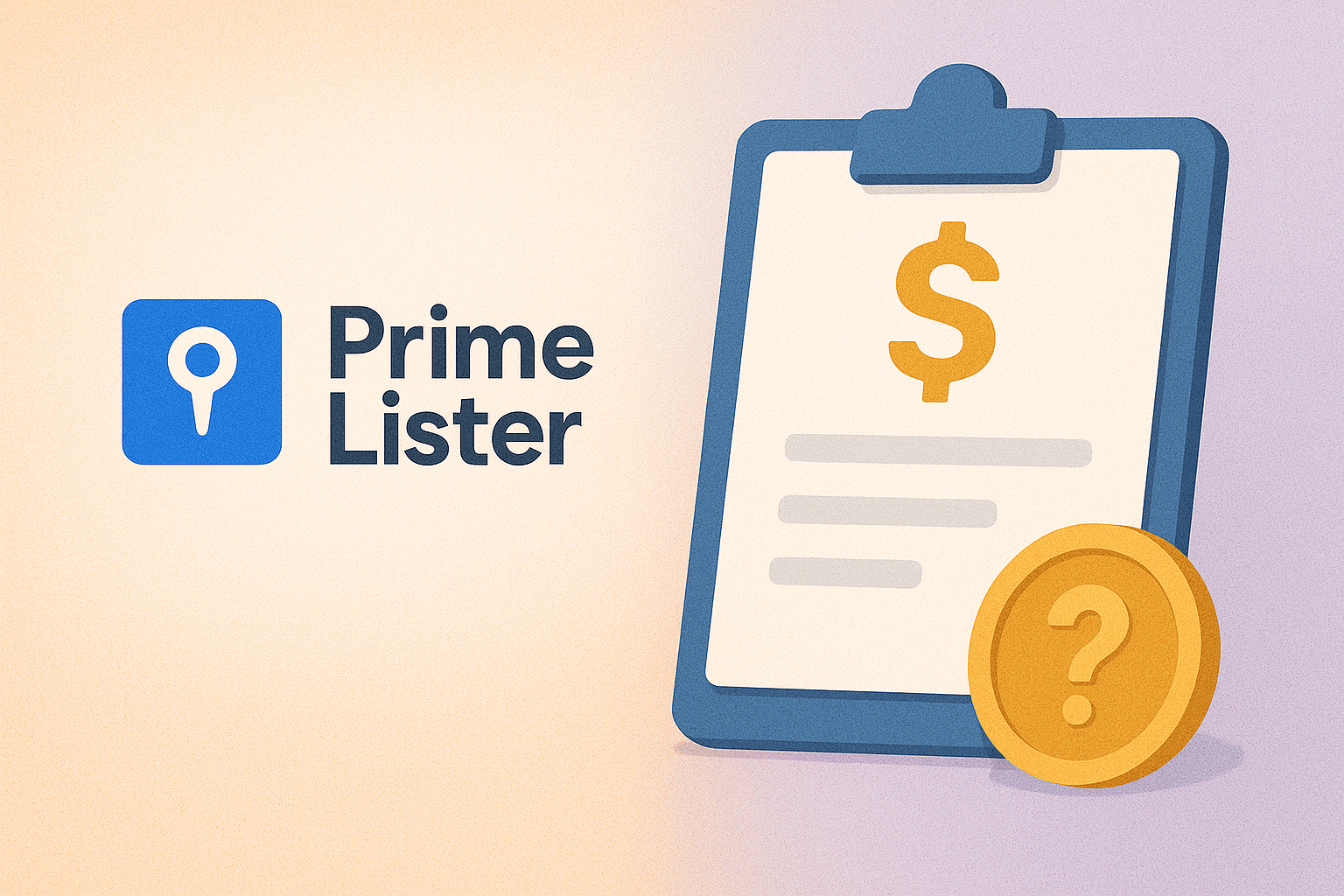

.png)